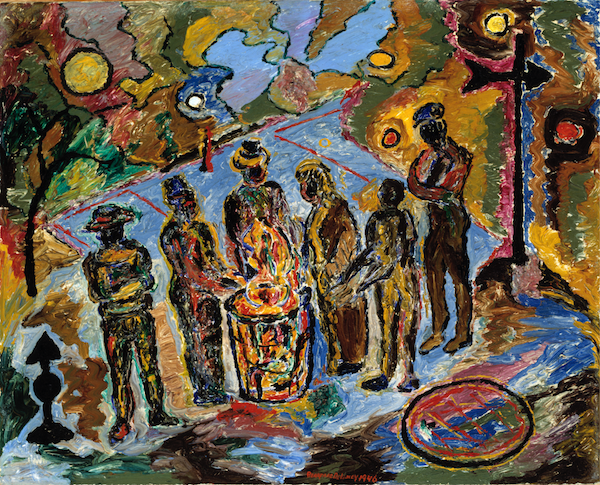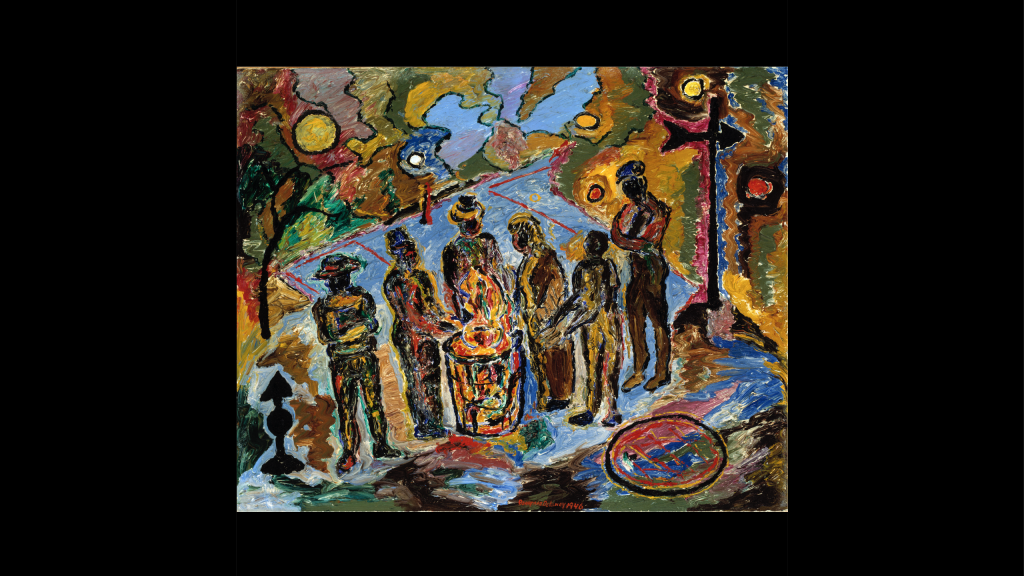Beauford Delaney’s Can Fire in the Park
Beauford Delaney’s Can Fire in the Park, a swirling vignette of thickly applied paint in vivid hues, captures an urban scene of a group of men huddling around an open fire in a New York park.
Delaney developed vocabulary of signs – streetlights, fire hydrants, and manhole covers – that became emblematic riffs on city life. In this painting, the bright yellow orbed streetlights, moonlight, and light from the can fire engulf and illuminate the men with whirling waves of color. Delaney struggled financially for most of his life, so this empathetic scene could also reflect a night he once spent on a park bench and the amity he shared with other homeless men. (1)

According to the Smithsonian American Art Museum, Can Fire in the Park also conveys a more disturbing message, “a legacy of deprivation linked not only to the Depression years after 1929 but also to the longstanding disenfranchisement of black Americans, portrayed here as social outcasts.” (2)
Born in Knoxville, Tennessee, Delany studied art in Boston, and in 1929, the energy of the Harlem Renaissance drew him to New York. By the mid-1940s, he had forged close friendships with novelists Henry Miller and James Baldwin and gained widespread recognition for pastel portraits of well-known African Americans such as W.E.B. DuBois and Duke Ellington. In the 1940s, Delaney also began using a thick impasto technique to depict urban and interior scenes. (2)
During the early 1950s, his work became increasingly nonrepresentational, although he retained a heavy impasto technique, and was more closely associated with Abstract Expressionism. In 1953, he moved to Paris where he lived until his death in 1979. (3)
While Delaney played a vital, important role in artistic and literary circles, for the majority of his life he tragically experienced financial struggles, mental illness, social and racial prejudices, and struggled to find a place for himself as a gay man and African American artist.
Delaney’s Can Fire in the Park and over 40 other works by 34 African American artists are featured in African American Art in the 20th Century, a traveling exhibition organized by Smithsonian American Art Museum, at The Westmoreland.
.
